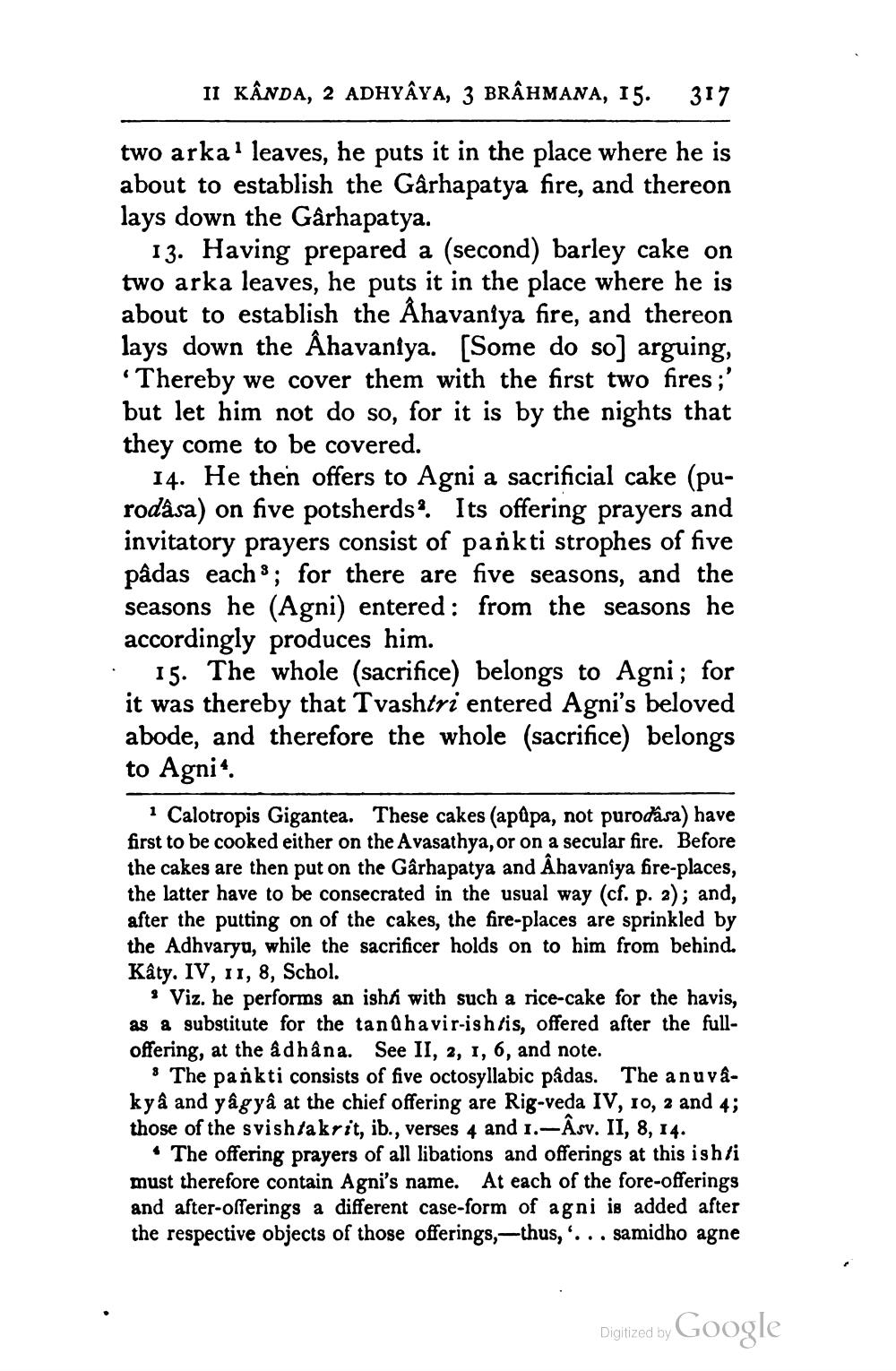________________
II KANDA, 2 ADHYAYA, 3 BRAHMANA, 15. 317
two arka1 leaves, he puts it in the place where he is about to establish the Gârhapatya fire, and thereon lays down the Gârhapatya.
13. Having prepared a (second) barley cake on two arka leaves, he puts it in the place where he is about to establish the Âhavaniya fire, and thereon lays down the Âhavantya. [Some do so] arguing, 'Thereby we cover them with the first two fires;' but let him not do so, for it is by the nights that they come to be covered.
14. He then offers to Agni a sacrificial cake (purodása) on five potsherds. Its offering prayers and invitatory prayers consist of pankti strophes of five pâdas each; for there are five seasons, and the seasons he (Agni) entered: from the seasons he accordingly produces him.
15. The whole (sacrifice) belongs to Agni; for it was thereby that Tvashtri entered Agni's beloved abode, and therefore the whole (sacrifice) belongs to Agni1.
1 Calotropis Gigantea. These cakes (apupa, not purodâsa) have first to be cooked either on the Avasathya, or on a secular fire. Before the cakes are then put on the Gârhapatya and Âhavaniya fire-places, the latter have to be consecrated in the usual way (cf. p. 2); and, after the putting on of the cakes, the fire-places are sprinkled by the Adhvaryu, while the sacrificer holds on to him from behind. Kâty. IV, 11, 8, Schol.
Viz. he performs an ish with such a rice-cake for the havis, as a substitute for the tanûhavir-ish/is, offered after the fulloffering, at the âdhâna. See II, 2, 1, 6, and note.
The pankti consists of five octosyllabic pâdas. The anuvâkyâ and yâgyâ at the chief offering are Rig-veda IV, 10, 2 and 4; those of the svish/akrit, ib., verses 4 and 1.-Âsv. II, 8, 14.
The offering prayers of all libations and offerings at this ish/i must therefore contain Agni's name. At each of the fore-offerings and after-offerings a different case-form of agni is added after the respective objects of those offerings, thus, . . . samidho agne
Digitized by Google




